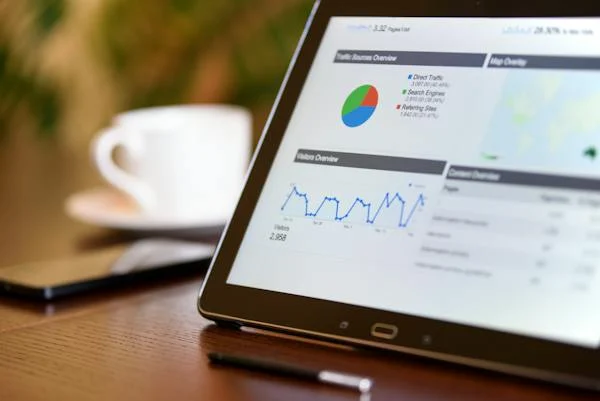In the vibrant world of fitness and wellness, where every heartbeat and breath counts towards a healthier life, email marketing stands as a vital pulse that connects health enthusiasts to the resources they need to maintain their wellbeing journey. It’s a digital bridge between the wellness wisdom you offer and the daily lives of those striving for health and happiness. In this detailed guide, we will take a deep dive into the strategies that make email marketing for the fitness and wellness sector effective and inspiring. From crafting motivational content to designing emails that encourage action, we’ll explore how to tap into the mindset of your subscribers, keeping them engaged, informed, and on track with their health goals. Whether you’re a personal trainer, a yoga studio owner, or a wellness coach, your emails can be a catalyst for change, a coach in moments of doubt, and a community for shared successes. So, let’s lace up our sneakers and embark on this journey to discover how your emails can motivate subscribers to embrace a healthier lifestyle with every click.
Crafting Your Wellness Narrative
The journey to health and fitness is a personal and emotional one. Your email content must resonate on a deeper level, connecting with the individual’s aspirations and challenges. Crafting a compelling wellness narrative in your emails can inspire action and foster a sense of community among your subscribers.
Understanding Your Subscriber’s Journey
Start by mapping out the typical subscriber’s wellness journey. Identify key milestones and potential obstacles they face. This understanding allows you to tailor your content to provide support and advice at each stage. For example, new subscribers might appreciate tips for getting started, while seasoned fitness enthusiasts could benefit from advanced strategies to overcome plateaus.
Sharing Success Stories
Inspiration is a powerful motivator. Share success stories from other subscribers or clients who have achieved their wellness goals. These stories should highlight the realistic steps taken and the persistence required, making the journey attainable and relatable. They serve as proof that the advice you’re giving can lead to real results.
Educating with Expertise
Your emails should be a trusted source of expert advice. Include content that educates subscribers on the latest fitness trends, nutrition tips, or mindfulness techniques. This positions you not just as a service provider, but as an expert in the field of wellness.
Personalizing the Path to Wellness
Personalization goes beyond addressing subscribers by name. Use data to segment your audience and send personalized content that matches their interests and behaviors. A subscriber who frequently clicks on high-intensity interval training (HIIT) content might receive emails focused on that topic, while another interested in yoga could get content about stretching and balance.
Designing Engaging and Motivational Email Content
The design of your email content is just as crucial as its substance when it comes to motivating subscribers in the fitness and wellness sector. A well-designed email can inspire subscribers to lace up their running shoes, unroll their yoga mats, or blend a healthy smoothie with enthusiasm.
Visuals That Propel Action
Incorporate vibrant and dynamic images that capture the energy and movement inherent in fitness activities. Use high-quality photos or videos of people exercising, preparing healthy meals, or meditating to inspire subscribers. These visuals should reflect the diversity of your audience and the joy of achieving wellness.
Crafting Compelling Headlines and Copy
Your headlines and body copy should be as strong as the core of any fitness enthusiast. Write concise, action-oriented headlines that compel readers to dive deeper into the content. The body copy should maintain this momentum, with persuasive and positive language that reinforces the benefits of staying active and healthy.
Interactive Elements
Bring interactivity into your emails with features like workout sliders, recipe flip-cards, or stress-reduction audio clips. For instance, a slider could allow subscribers to see a before and after effect of a 30-day fitness challenge, or flip-cards could reveal healthy ingredients and their benefits. Interactive elements keep subscribers engaged and make your emails a hands-on experience.
Calls-to-Action That Move Subscribers
Your calls-to-action (CTAs) should be clear, compelling, and easy to find. Use verbs that encourage immediate action like “Start Training,” “Join the Challenge,” or “Get Your Meal Plan.” Ensure that these CTAs stand out visually and are accessible even on mobile devices.
Segmentation Strategies for Personalized Wellness Campaigns
The one-size-fits-all approach rarely fits well in the world of wellness. Your subscribers are individuals with unique health goals, preferences, and levels of expertise. Segmentation allows you to personalize your email campaigns and connect with your audience on a more personal level.
Segmenting by Fitness Level
Recognize that your subscribers will be at different stages in their fitness journey. Segment your list by beginner, intermediate, and advanced levels, and tailor your content accordingly. Beginners may need encouragement and basic advice, while advanced subscribers might be looking for ways to challenge themselves further.
Dietary Preferences and Needs
Just as important as exercise is diet, and subscribers may have specific dietary preferences or requirements. Segmenting your audience based on interests in vegetarian, vegan, keto, or gluten-free diets, for example, allows you to send targeted nutrition tips, recipes, and meal plans that cater to these preferences.
Engagement-Based Segmentation
Monitor how subscribers engage with your emails. Are they avid readers of your workout tips or more interested in your stress-reduction techniques? Use this information to segment your list based on content engagement, ensuring that each subscriber receives more of what they love.
Demographic Segmentation
Demographic factors such as age, gender, and location can influence fitness and wellness needs. Tailor your campaigns to these demographics to increase relevance. For instance, yoga routines for seniors can be sent to your older subscribers, while high-energy boot camp workouts might be more suitable for a younger demographic.

Related: Check out our free SEO suite

Automation in Wellness Email Marketing
Automation in email marketing is like having a digital personal trainer for your campaigns—it ensures that the right messages reach your subscribers at the right moments, based on their individual actions and behaviors.
Welcome Sequences for New Subscribers
The welcome sequence is your first opportunity to engage new subscribers. Automate a series of emails that gradually introduce your brand, your ethos, and your unique value proposition. For a fitness app, the first email could welcome the subscriber, the second could introduce the app’s features, and the third could offer a first workout or meal plan. Each email should build upon the last, creating a foundation of trust and anticipation.
Milestone Celebrations and Encouragement
Automate emails that celebrate subscriber milestones. This could be workout streaks, weight loss goals, or the completion of a wellness challenge. These emails should feel personal and celebratory, reinforcing the subscriber’s commitment to their health and recognizing their achievements. For example, after a subscriber logs their 30th workout, they receive an automated congratulatory message with a small reward, like a discount on their next subscription fee or a free wellness e-book.
Re-engagement Campaigns for Lapsed Subscribers
Create an automated series to re-engage subscribers who haven’t interacted with your emails or services for a set period. The first email could inquire about their absence, the second could offer help or resources to get back on track, and the third could include a special offer to reignite their interest. For instance, if a subscriber hasn’t visited your online fitness platform in three months, trigger a re-engagement email offering a free consultation to discuss their fitness goals and how your platform can help achieve them.
Personalized Content Delivery Based on Behavior
Use automation to send personalized content based on subscriber behavior. If a subscriber frequently opens emails about yoga, set up an automated sequence that provides more in-depth content on that topic, such as advanced yoga techniques, the benefits of yoga for mental health, or profiles of yoga instructors. For example, a subscriber who watches a video on meditation could be automatically enrolled in a “Mindfulness Series,” receiving a sequence of emails that delve deeper into different meditation practices.
Analyzing Campaign Performance to Maximize Impact
In the fitness and wellness sector, the success of email marketing campaigns is not just measured by the open and click-through rates but also by the tangible impact on subscribers’ health habits and lifestyle choices. Analyzing campaign performance involves a deep dive into metrics and subscriber feedback to fine-tune your approach for maximum engagement and motivation.
Key Metrics to Monitor
Start with the basics: track open rates, click-through rates, conversion rates, and unsubscribe rates. Beyond these, measure engagement metrics such as email forwards, social shares, and interaction with interactive content. For a wellness newsletter, you might track how many subscribers use the embedded workout videos or click on links to meditation audio tracks.
Subscriber Feedback as a Performance Indicator
Encourage and collect subscriber feedback through surveys embedded in emails or follow-up emails asking for input. Feedback can give you qualitative insights that numbers alone cannot, such as how a particular article or challenge might have changed a subscriber’s approach to wellness.
A/B Testing to Refine Campaigns
Use A/B testing to determine what resonates best with your audience. Test different subject lines, email designs, content types, and CTAs. For instance, you might test whether subscribers respond better to a CTA that offers a free nutrition consultation or one that invites them to join a community fitness challenge.
Utilizing Data for Personalization
Dig into the data to personalize future campaigns. If you notice a segment of your audience consistently engages with content about plant-based diets, you can create more targeted content for this group. Conversely, if another segment seems to skip these topics, you could try a different approach or offer alternative content that aligns more closely with their interests.
Final Thoughts
Email marketing is a dynamic and powerful channel for the fitness and wellness industry. It’s a direct line to your subscribers that can deliver not just marketing messages, but also valuable content that empowers them to make positive health decisions. As you continue to develop your email marketing campaigns, remember that each message should add value to your subscribers’ lives. Whether it’s through a motivational story, a workout tip, or nutrition advice, your emails have the potential to make a significant impact on someone’s health and wellness journey.
READ NEXT:
- Branding for the Entertainment Industry: Crafting Memorable Experiences and Stories
- The Power of Personalization in Content Marketing: A Guide to Getting it Right
- 10X Your Digital Marketing Now! Skyrocket Your Leads in 30 Days
- Content Curation: Adding Value by Showcasing Others’ Expertise
- The Role of Interactive Content in Enhancing Influencer Marketing Campaigns





















